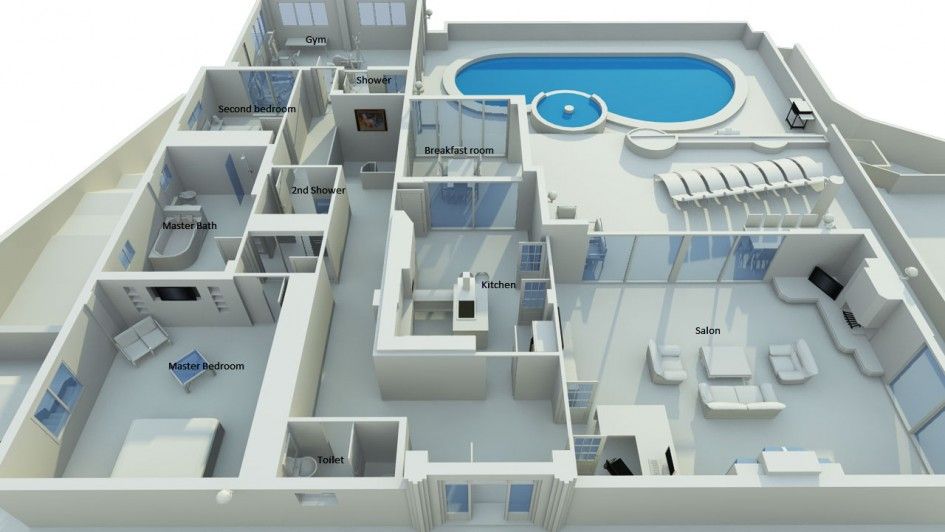Backyard Pool For Summer
A backyard pool can be a great addition to your home during the summer months, providing a fresh escape from the sun and a perfect place to cool off and have fun. Here are some pool design ideas for making the most of your backyard pool during the summer:
Keep it clean:
Regular cleaning and maintenance are essential to keep your pool healthy for swimming. Be sure to vacuum the pool, skim the surface for debris, and maintain the proper chemical balance to prevent algae growth and other issues.
Pool Cleaning Tools – https://amzn.to/4b3RwQC
Stay Cool:
During hot summer days, the pool can provide a cool and comfortable place to relax and beat the heat. You can also install shade sails or umbrellas around the pool to provide shade and protect from harmful UV rays.
Add fun features:
Fun features like a water slide, diving board, or pool toys can make the pool more enjoyable for kids and adults.
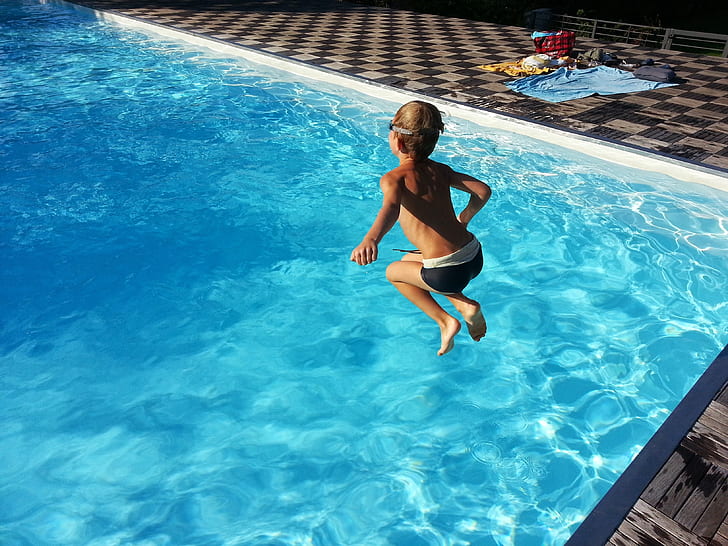
Pool Design Ideas: Take a Dip To Beat The Sun.
Keep it safe:
Safety is a top priority for a backyard pool, especially if you have children or pets. Install a pool fence, safety covers, and alarms to prevent accidents and ensure everyone stays safe while enjoying the pool.
Pool Fence on Amazon – https://amzn.to/3JOE6fo & https://amzn.to/3wmOZSy
Host pool parties:
A backyard pool is perfect for summer pool parties and BBQs. You can add outdoor furniture, lighting, and music to create a festive and inviting atmosphere.
Exercise:
Use the pool for training, such as swimming laps or water aerobics, to stay active and healthy during summer.
By following these tips, you can make the most of your backyard pool during the summer and create a fun and relaxing environment for you, your family, and your friends.
IDEAS FOR HOME OFFICE WALLPAPER
Benefits of Backyard Pool

Pool Design Ideas: Take a Dip To Beat The Sun.
There are many benefits to having a backyard pool, including the following:
Relaxation:
A backyard pool provides a peaceful and serene environment to relax and unwind after a long day or week. It can also help reduce stress and anxiety.
Exercise:
Swimming is a low-impact exercise that can improve cardiovascular health, strength, and flexibility. Having a pool at home makes it easy to incorporate swimming into your daily routine.
Family time:
A backyard pool is a great way to bring the family together for fun and bonding. Kids love to swim, and having a pool at home makes spending quality time with them easy.
Entertainment:
A backyard pool is perfect for entertaining guests, whether for a summer party or a BBQ. It provides a focal point for socializing and can make your backyard the go-to spot for hosting events.

Pool Design Ideas: Take a Dip To Beat The Sun.
Increase home value:
A well-designed and well-maintained backyard pool can add value to your home and make it more attractive to potential buyers.
Personalization:
Building a backyard pool allows you to customize the design, size, and features to fit your personal preferences and lifestyle.
Awning Design Ideas: Add Decors to Your House Exterior with Beautiful Awning Ideas
Convenience:
Having a pool at home eliminates the need to go to a public pool, which can be crowded and noisy. It also allows you to swim at any time without worrying about the hours of operation or access restrictions.
Overall, a backyard pool can provide numerous benefits for both physical and mental well-being and enhance your quality of life and enjoyment of your home.
Tips for Building a Backyard Pool Design

Building a backyard pool can be a significant investment, but it can also provide you and your family with years of fun and relaxation. Here are some tips to consider when building a backyard pool:
Choose the right location:
The location of the pool is critical. It should be situated where it gets ample sunlight and is away from large trees or other obstructions that could create problems during construction or damage the pool later on. Consider the privacy of your pool area and the proximity to your home and any outdoor living areas.
Determine the size and shape of your pool:
Consider the intended use of the pool, the size of your backyard, and any zoning or permit requirements when determining the size and shape of your pool. A smaller pool may be sufficient for a couple or small family, while a more extensive pool may be better for a larger family or for entertaining.
Choose the suitable materials:
There are many materials to choose from when building a pool, such as concrete, fiberglass, and vinyl. Each material has its pros and cons, so you’ll want to do your research and choose the one that fits your budget, design, and maintenance preferences.
Hire a professional pool contractor:
Building a pool requires significant expertise, so hiring a licensed and experienced pool contractor is essential. They will guide you through the design, construction, and maintenance phases and ensure the pool meets local building codes and safety requirements.
Consider safety features:
A backyard pool comes with inherent safety risks, so it’s crucial to incorporate safety features into your pool design. Some safety features include pool fencing, safety covers, pool alarms, and non-slip decking.
Kitchen with Dark Cabinets – Know what colors go with it
Maintenance plan:
A pool requires regular maintenance to keep it in good condition. Plan for ongoing maintenance costs and establish a routine maintenance schedule to keep your pool clean, healthy, and safe.
Have fun:
Remember, a pool is meant to be enjoyed, so remember to incorporate fun features like waterfalls, fountains, and lighting into your pool design to make it a place where your family and friends will love to spend time.
How Deep Should Your Backyard Pool Be

The depth of your backyard pool depends on several factors, including the intended use, the size of the pool, and local building codes. Here are some general guidelines for pool depth:
Shallow end:
The pool’s shallow end is typically 3-5 feet deep and is suitable for children and less experienced swimmers. This depth allows swimmers to stand and play in the water while being safe.
Deep end:
The pool’s deep end is typically 6-8 feet deep and is suitable for experienced swimmers and divers. It’s important to note that diving is only allowed in deep enough pools with proper diving equipment installed.
Slope:
The bottom of the pool should slope gradually from the shallow end to the deep end. This slope ensures the water depth changes slowly, making it safer for swimmers.
Local building codes:
Local building codes may have specific requirements for pool depth, depending on the type of pool and location. It’s essential to consult with a professional pool builder and local authorities to ensure your pool meets all the requirements.
Overall, the depth of your backyard pool should be determined by your specific needs and preferences, as well as any local building codes or regulations that may apply.
Japanese Bedroom Design – Simple Design Tips & Ideas
Pool Accessories for Backyard pool

There are many pool accessories available to enhance your backyard pool experience. Here are some popular options:
Pool Cover:
A pool cover is an essential accessory for any backyard pool. It helps keep the water clean, prevents evaporation, and reduces energy costs. There are several types of pool covers, including safety covers, solar covers, and winter covers.
Pool Lighting:
Pool lighting can create a beautiful ambiance and enhance nighttime swimming. There are several types of pool lighting available, including LED lights, fiber optic lights, and floating pool lights.
Pool Heater:
A pool heater allows you to extend your swimming season and enjoy your pool even in cooler weather. There are several types of pool heaters, including gas, electric, and solar.
Pool Cleaning Equipment:
In addition to the essential pool cleaning tools, there are several pool cleaning accessories available, such as automatic pool cleaners, pool skimmer socks, and pool scrubbing pads.
Pool Toys and Games:
Pool toys and games can add to the fun and entertainment of your backyard pool. Some popular options include pool floats, water basketball hoops, and diving toys.
Pool Furniture:
Adding comfortable pool furniture, such as lounge chairs, umbrellas, and tables, can create a relaxing and inviting atmosphere around the pool.
Pool Fencing:
A pool fence is an essential safety accessory for any backyard pool. It helps keep children and pets out of the pool area and prevents accidents.
Adding these pool accessories to your backyard pool can create a safe, enjoyable, and inviting space for family and friends to relax and have fun.
Tips for Choosing the Perfect Apartment Plan
Cost to Maintain a Backyard Pool.
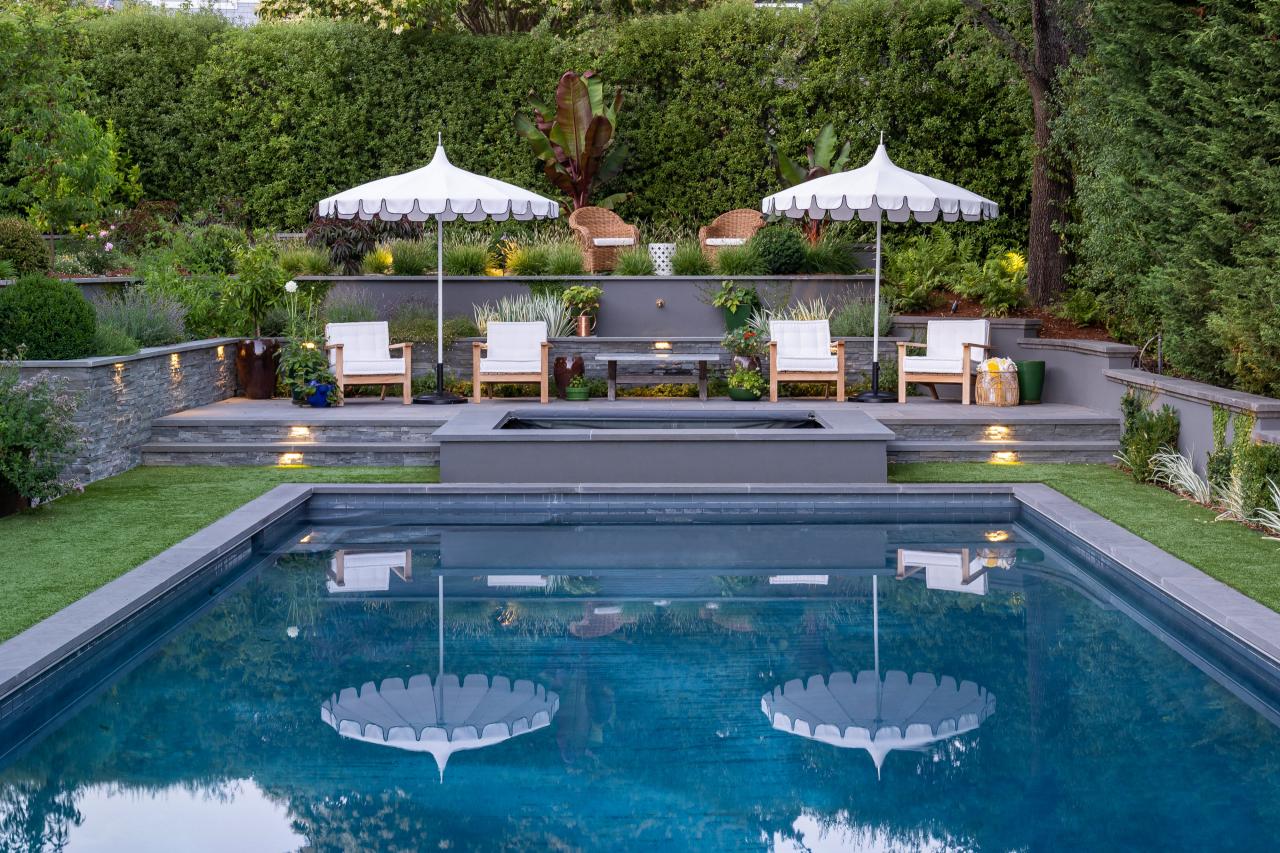
The cost to maintain a backyard pool can vary depending on several points, including the pool size, the type of equipment used, and the climate in your area. Here are some of the standard costs associated with maintaining a backyard pool:
Chemicals:
Chemicals are necessary to keep the pool clean and balanced. The cost of chemicals can vary depending on the type of pool and the size of the pool, but on average, it can range from $30 to $80 per month.
Water:
Depending on the frequency of use and climate, the cost of refilling the pool can add up quickly. The average price of filling a pool can range from $100 to $500, depending on the pool size and the water cost in your area.
Energy:
The cost of running the pool pump and other equipment, such as the pool heater and pool cleaner, can vary depending on the pool’s size and the equipment’s efficiency. It can cost around $100 to $200 per month.
Maintenance:
Regular pool maintenance, such as cleaning the pool, maintaining the equipment, and repairing any damages, can cost around $50 to $100 per month, depending on the size of the pool and the frequency of maintenance.
Repairs:
Repairs and replacements of pool equipment, such as pumps, filters, and heaters, can add high costs to maintaining a backyard pool. The cost of repairs can vary depending on the type of equipment and the extent of the damage.
Overall, the cost of maintaining a backyard pool can range from $200 to $500 per month, depending on the pool size, the type of equipment used, and the climate in your area. However, by following proper maintenance practices and investing in efficient equipment, you can help reduce the cost of maintaining your pool.
Best Colors to Pair with the Color Gray – 2023
Tools Required to Maintain Your Backyard Pool Design
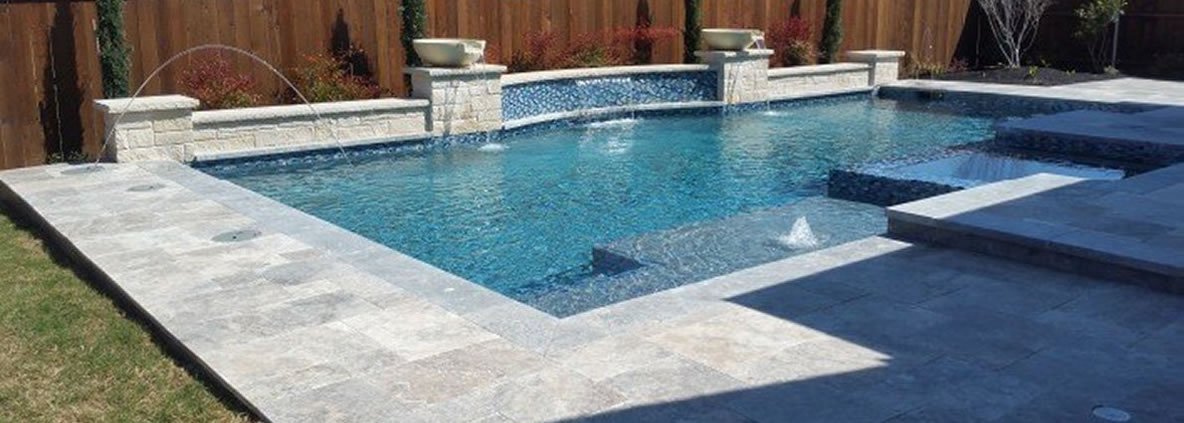
Maintaining your backyard pool requires a few essential tools to keep it clean, safe, and enjoyable. Here are some of the tools you’ll need:
Skimmer net:
A skimmer net is a tool used to remove leaves, bugs, and other debris from the pool’s surface. Skimming the pool regularly is vital to prevent debris from sinking to the bottom and causing stains or other issues.
Pool brush:
A pool brush is used to scrub the walls and floor of the pool to remove algae and other buildups. Brushing the pool regularly helps prevent algae growth and keeps the pool looking clean and inviting.
Pool vacuum:
A pool vacuum removes debris at the bottom of the pool. There are various pool vacuums, including manual, automatic, and robotic.
Water testing kit:
A water testing kit measures the chemical levels in the pool, including pH, alkalinity, and chlorine levels. Regular testing is essential to maintain proper water chemistry and prevent algae growth and staining.
Chemicals:
Various chemicals are used to maintain the proper chemical balance in the pool, including chlorine, pH balancers, and algaecides. Using the right chemicals in the right amounts is essential to keep the pool clean and safe.
Pool cover:
A pool cover is essential to protect the pool from debris, prevent evaporation, and keep the pool water warm. There are several types of pool covers, including safety covers, solar covers, and winter covers.
Safety equipment:
Safety equipment, such as a pool fence, safety covers, and alarms, are essential to prevent accidents and ensure everyone stays safe while enjoying the pool.
With these essential tools, you can maintain your backyard pool and ensure it stays clean, safe, and enjoyable for years.
Fantastic Bedroom Wall Color Schemes
How to winterize your backyard pool – Pool Design
Winterizing your backyard pool is essential to protect it from damage during the winter months. Here are the steps to winterize your pool:
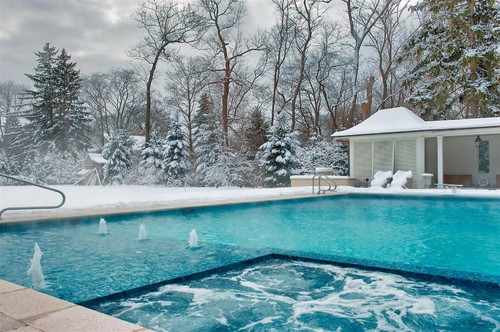
Clean the pool:
Before closing the pool for the winter, it’s crucial to clean it thoroughly to remove any debris or algae. Brush the walls and floor of the pool, skim the surface for debris, and vacuum the pool.
Balance the water chemistry:
Before closing the pool, it’s essential to balance the water chemistry to prevent algae growth and protect the pool surface. Adjust the pH, total alkalinity, and calcium hardness levels as needed, and shock the pool to remove contaminants.
Drain the pool:
Depending on your location and climate, you may need to partially or completely drain the pool to prevent damage from freezing temperatures. Consult with a professional pool service to determine the proper water level for your pool.
Winterize the equipment:
Properly winterize the pool equipment, such as the filter, pump, and heater, by draining and removing all water from the kit and storing it in a dry place.
Add winterizing chemicals:
Add winterizing chemicals to the pool, such as a winter algaecide and a winterizing floater or tablets, to prevent algae growth and protect the pool from freezing.
Cover the pool:
Cover the pool with a high-quality pool cover that fits snugly and securely to prevent debris from entering the pool and protect it from freezing temperatures.
By following these steps, you can winterize your backyard pool and protect it from damage during the winter months. It’s also essential to perform regular maintenance and inspections throughout the winter to ensure the pool remains in good condition until it’s time to reopen it in the spring.
